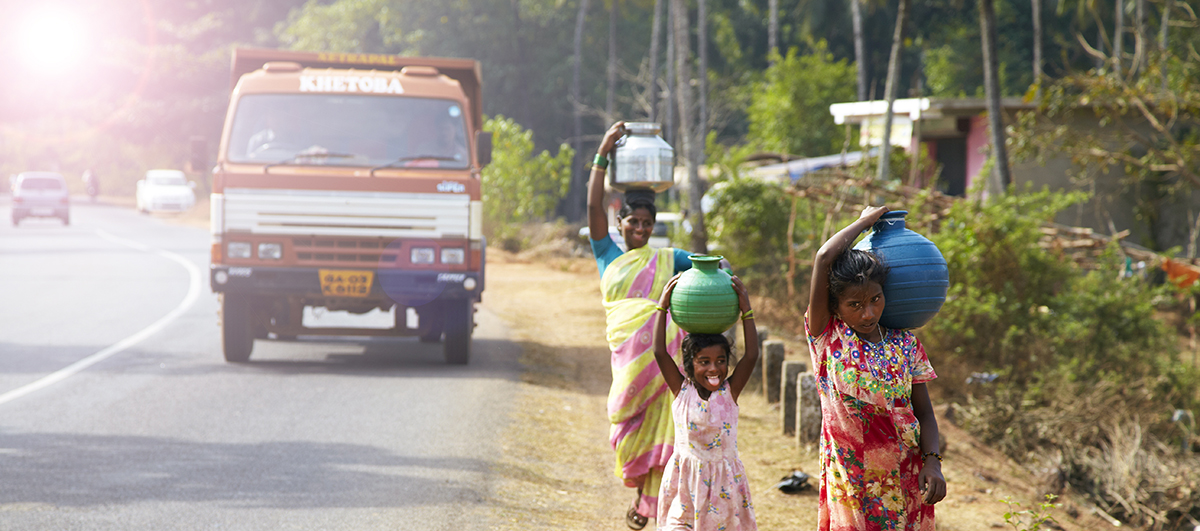Water-Insecurity Increases COVID-19 Risks
Texas A&M’s Dr. Wendy Jepson and researchers analyze how water insecurity can hinder strategies to combat the coronavirus.
Jun 22, 2020

For people who do not have easy access to safe drinking water, maintaining personal hygiene and physical distancing to stem the global outbreak of COVID-19 is no simple task.
Water insecurity — which is a lack of access to affordable, adequate, reliable, and safe drinking water — can make following safety precautions nearly impossible, said Dr. Wendy Jepson, University Professor in the Department of Geography at Texas A&M University and a co-author of a recent paper on these problems.
“Water-insecure households in low- and middle-income countries are particularly vulnerable to COVID-19, as they often rely on water sources for daily life that precludes social distancing measures,” Jepson said. “Reliance on water fetching, in particular, increases risk. And for some, the lack of water for adequate hygiene further compounds vulnerability.”
The researchers’ analysis was recently published in the Journal of Global Health. Led by Dr. Justin Stoler, University of Miami associate professor of geography and public health sciences, the paper was co-authored by Jepson and Dr. Amber Wutich, Arizona State University,
“Inadequate water security can be a multiplier effect for COVID-19 risk and lead to more severe cases,” Stoler said.
The researchers described how inadequate water access increases the risk for COVID-19 in many ways beyond limiting handwashing. Stringent physical distancing measures imposed as a result of COVID-19 are not always compatible with the realities of people living in the most impoverished regions of the world — such as sub-Saharan Africa and South Asia — who often obtain water from outside the home.
Cities with high population densities and urban poverty are areas with compounded risks and likely COVID-19 hot spots, the researchers said.
“Poverty and inequality, which correlates with water insecurity, further deepen COVID-19 risk and disproportionately burden the most vulnerable,” Jepson said.
Typical social distancing measures that might be taken for granted in the United States will be even more challenging to follow for families living without basic water and sanitation services, they said. When people experience water insecurity, it becomes more challenging for them to collect water needed for basic personal hygiene, such as handwashing. And, it is difficult for them to have enough water to sanitize surfaces.
These problems also exist in the U.S., in places like the Navajo Nation, where many live without running water. And in under-resourced areas, some low-income residents who have lost jobs have had their water service shut off because they can’t pay the bill.
Stoler, Jepson and Wutich, along with several other researchers in the National Science Foundation-funded Household Water Insecurity Experiences Research Coordination Network (HWISE RCN) are conducting a follow-up study that analyzes data from 8,297 households across 23 countries to quantify how COVID-19 is most likely to affect families who experience water insecurity. Their analysis shows that 71 percent of households face at least one water problem that could interfere with COVID-19 prevention, Stoler said.
It is common for households around the world to compensate for a lack of access to water by sharing a water source, which also contradicts physical distancing guidelines. Jepson noted that over half of the study households accessed water in ways that potentially place people at an increased risk of COVID-19 transmission. Water fetching and reliance on bottled or vended water involve interactions which require person-to-person contact. Some families must reuse water storage containers, which could raise the possibility of contamination or transmission of the virus, as well.
“From a policy standpoint, interventions to alleviate or make water fetching safer may help, or increasing public water access points may also allow for households to reduce time exposed to others while waiting in line,” Jepson said. “But in the final analysis, we also look to better and smarter investments in providing public water and sanitation that is close, safe, and secure as the necessary solution for the next pandemic.”
Jepson, Stoler and Wutich co-lead HWISE-RCN, which has NSF funding through 2023.
By Leslie Lee, in collaboration with Janette Neuwahl Tannen, University of Miami
